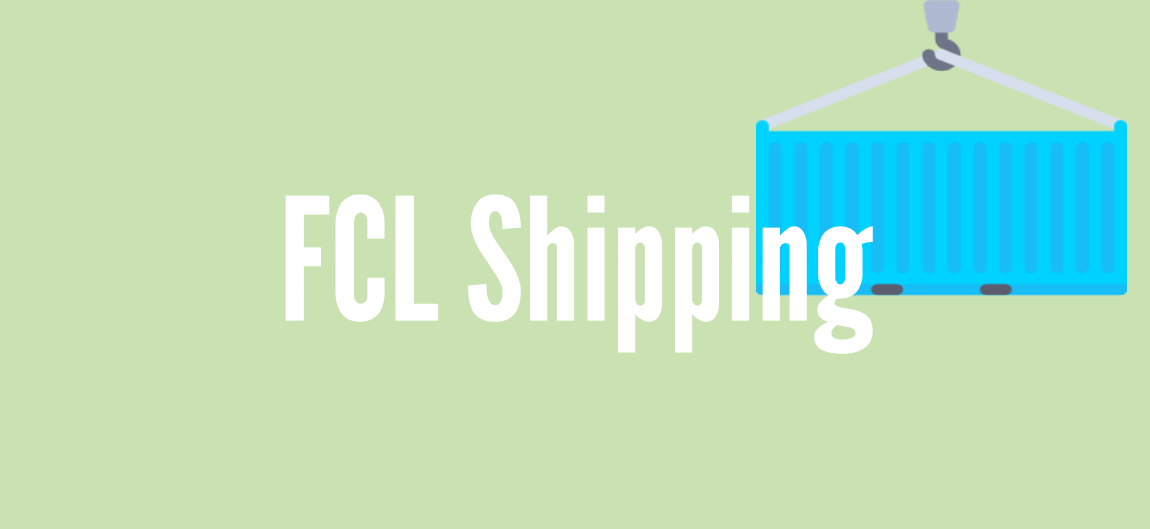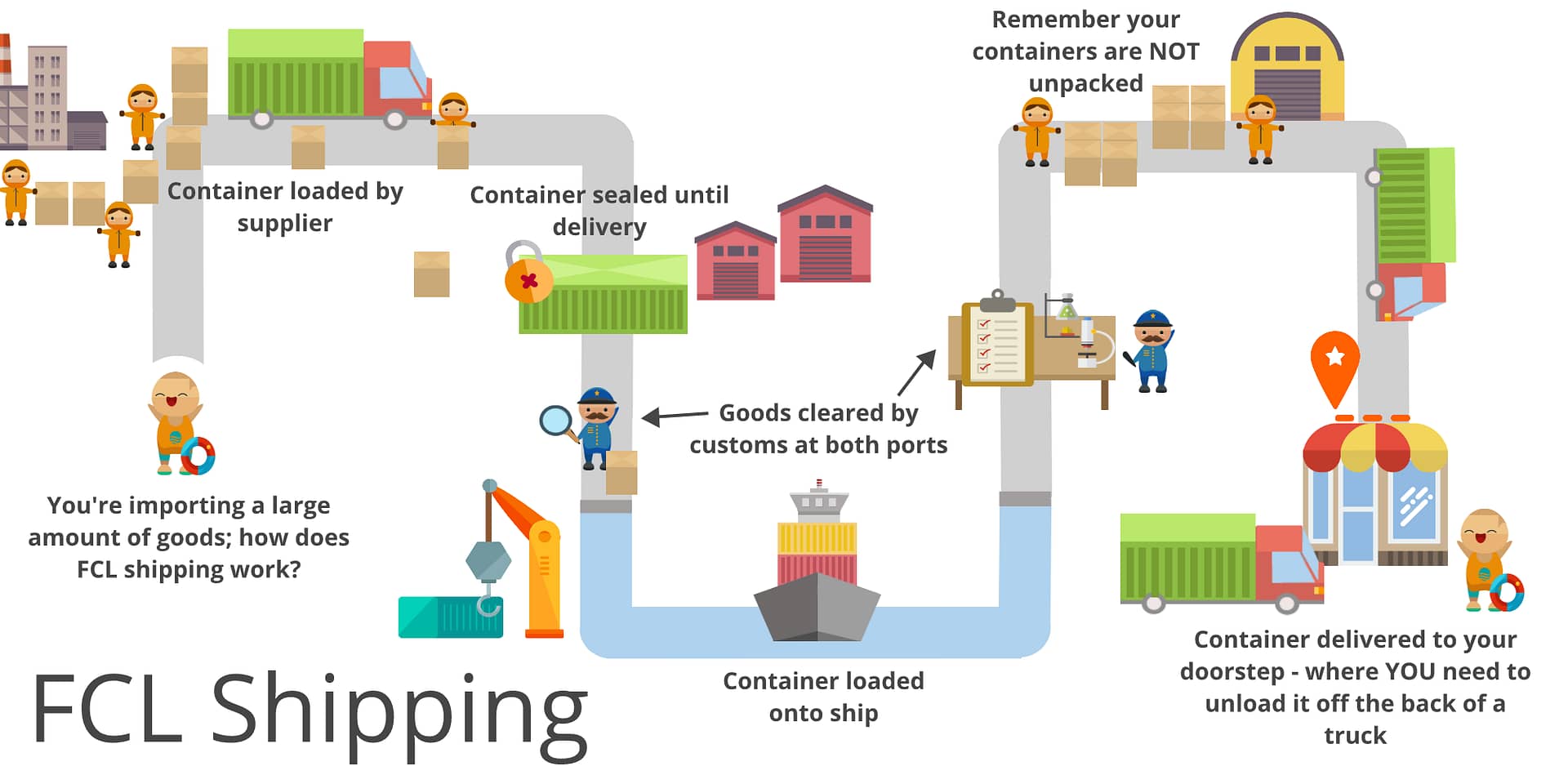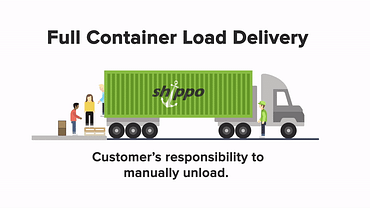The FCL shipping process is ideal for anyone looking to import large amounts of goods, our comprehensive guide explains what FCL is, the process and how it compares to other shipping methods.
The FCL Shipping Process
If you’re looking to import a large amount of stock (over about 20 cubic metres) then the FCL shipping process may be the method for you. All you need to do is establish the container size you’ll need (here’s our guide) and understand some key bits of the process. As the container is only packed with your goods, it will be loaded by your supplier and unloaded by you on arrival. Here’s an overview of the FCL shipping process:
- Our local overseas agent will contact your supplier. They will decide, based on the readiness of the goods, which ship they will catch
- The container will be taken to your supplier’s factory on the back of a truck. Your supplier will load the goods into the container
- The container will be sealed and taken to the port where it’ll be cleared through customs. It’s loaded onto the ship which brings it to the UK
- In the UK the container is taken off the ship and put on the quay
- The port gives 7 days free rent for the container to be customs cleared and delivered (so we all need to be quick!)
- Once cleared the container will be loaded onto the back of a truck. The truck will arrive outside your premises and you have to break the container’s seal
- You have 3 hours to unload your goods from the container either by hand (you may need some help!)
- The empty container is driven back to the port to be reused
Features of FCL Shipping
- Cheaper per cbm. If you are importing a large amount of stock, FCL is the cheaper option as you pay ‘per container’ rather than ‘per cubic metre’.
- Quicker than LCL. FCL requires much less loading and unloading at each port. As a result, you save time at both ends of the process.
- Only you and your supplier touch the goods. So, the risk of damage is reduced. One of the biggest reasons that we recommend marine insurance is that cargo getting damaged in transit is a real concern. Many importers don’t understand how many people need to touch their goods just to get them from one place to another and that accidents can happen. When you ship using FCL, your goods are far more secure as they are transported in the container as opposed to being taken out and handled.
- You need to import a larger amount of stock. To be a cost-efficient option, FCL requires you to be importing a larger volume of products. For a start-up or small business, this means that FCL may not be viable.
Things To Be Aware Of And Prepare For When Shipping FCL
- You’ll have to plan ahead for unloading! Now, it’s a double-edged sword that your goods are only touched by your supplier and yourselves. As the goods are not moved from the container the chance of damage is reduced, however, delivery for FCL can be more complicated. When shipping via LCL your goods are delivered on a curtain-sided truck so you can unload with a forklift or on a vehicle with a tail-lift to drop the pallets to the ground. With full container load shipping your goods arrive in a container on the back of a lorry and you’re expected to unload them yourself….. probably by hand. If you know that your supplier has palletised the products then you can probably use a forklift and a pump truck (if you’ve got them) but it’s still not quite as easy as unloading a truck. The main take-home here is to PLAN AHEAD!
- Difficult to import to FBA; due to the above reason, delivering an FCL shipment into Amazon FBA is way more difficult than importing an LCL shipment.
Who Should Use FCL Importing?
If you are shipping a large volume of goods, sometimes the FCL shipping process is the better/only option. When shipping FCL, you pay a flat fee for the use of the container instead of paying for the volume of your goods; this works out cheaper per cbm than LCL shipping, making FCL cost-efficient for larger shipments.
The Difference Between FCL Shipping and LCL?
The main difference between FCL and LCL is that with FCL you rent out and use the entire container for your shipment, whereas with LCL you rent out space within a container.
Watch Our Short Video On How The FCL Shipping Process Works
Contact Shippo For FCL Shipping
If you have enough product to fill a container and you’re interested in using the FCL shipping process, Shippo are more than capable of helping you! Feel free to grab a free quote or get in contact with us to find out more.
I really appreciated the diligence and care with which Alex at Shippo helped me to complete my first China to UK shipment. Their efficiency and your insights throughout have been invaluable and their sea freight rates were the most competitive. I’ll most definitely use Shippo in the future.Advance Global




